History of Petits Fours: Luscious Little Layer Cakes
The history of petits fours (often Americanized to pettifor) goes back hundreds of years. But, what are petits fours? Learn the origin of petits fours and why they make so much sense at today’s parties.
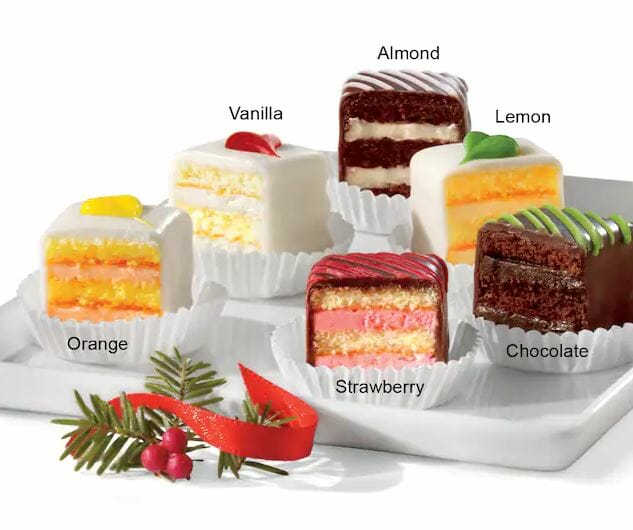
Whenever there’s a special event—a birthday, a wedding, or any other reason to celebrate—a layer cake is usually not far away. Unfortunately, layered cakes can be somewhat labor-intensive…not to mention messy. Someone needs to cut the cake, at which point it ceases to be pretty. Some people want big pieces; others want small. Some don’t want frosting; others want only frosting. The rest gets thrown. Plates and forks are needed: either nice ones, which need to be washed, or disposable ones, which wind up in the trash. Then, of course, it’s not easy to walk around and mingle while eating cake.
Luckily, there is a better way—one that’s been around for 130 years or so—and it’s absolutely perfect for the retro revival of the Cocktail Age. Presenting the petit four, the bite-sized, little, luscious, layered, cake.
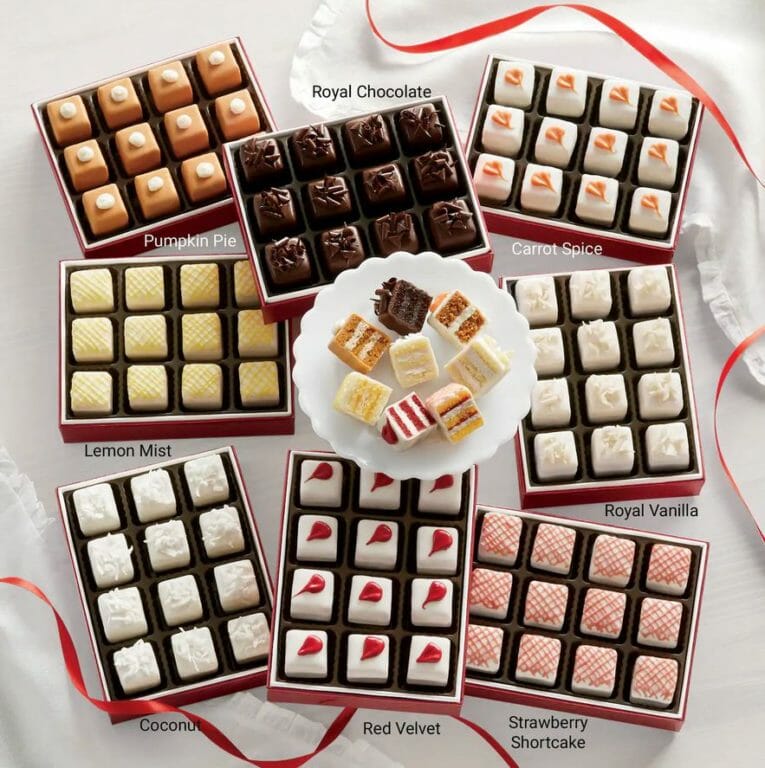
Pettifor or Petit Four?
The definition, or meaning, of petit four (plural: petits fours) is “a small teacake, variously frosted and decorated”. In case you were wondering, “petit four” is pronounced “puh-TEE FOOR” but is usually Americanized to sound like “pettifore” or “pettifour.” In fact, many people searching for this delight on the Internet type in “pettifor cake” or “pettifor dessert”. As you can imagine, the petit four originated in France…but it has nothing to do with the number four. In French, four means “oven.”
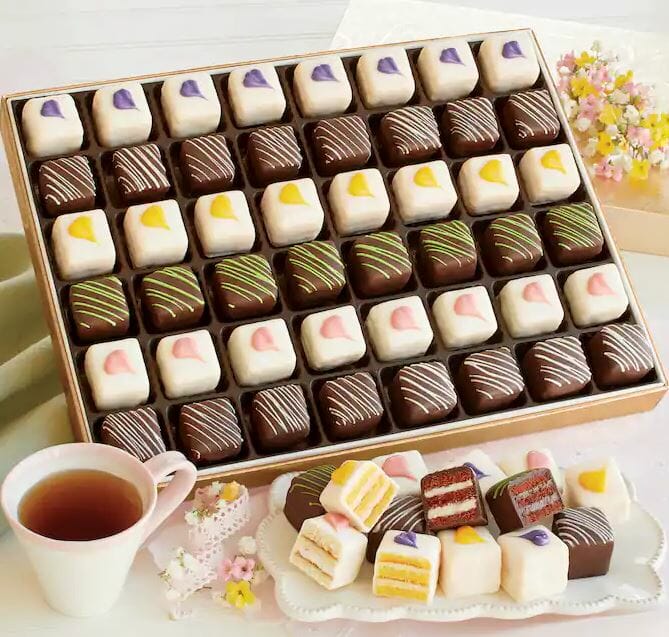
What are Petits Fours?
In the 19th century, there were no gas ovens. French bakers had huge brick or stone ovens that were usually coal-fired. They took a long while to heat up, got really hot, and then took their time cooling off. There were no temperature controls, only two imaginary “settings.” When the fire was at its most intense, it was called grand four (“big oven”), used for roasting meats, crusty loaves of bread, cakes, and other main events. When the fire was dying out, and there was still plenty of heat retained in the oven walls, this was called petit four (“small oven”). This lower temperature was perfect for baking individual pastries and bite-sized cookies and appetizers, all of which came to be called petits fours.
There are several types of petits fours: petits fours salé (“salted,” or savory appetizers), petits fours sec (“dry” as in cookies and macarons), petits fours frais (“fresh,” referring to highly perishable items like éclairs and madeleines which must be eaten that day when kept at room temperature), and petits fours glacé (“glazed,” which are decorated miniature cakes covered in fondant, chocolate or white chocolate and decorated with royal icing). In America, these tiny glacé cake bites, consisting of multiple layers of cake and buttercream, are what most people know as petits fours…and many people got to know them because of an Austrian immigrant named Horst Hart.
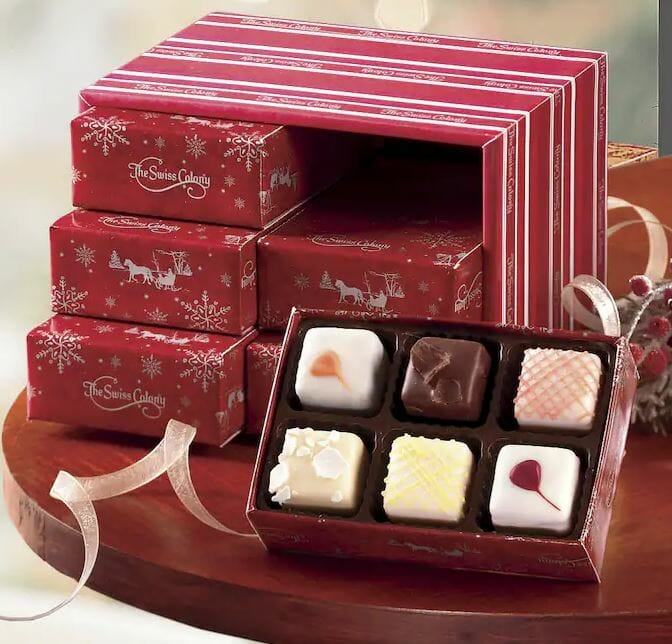
The Origin of Swiss Colony Petits Fours
In 1958, The Swiss Colony endeavored to expand its operations from the cheese-selling business it had established in Monroe, Wisconsin, more than 30 years earlier. The Swiss Colony Bakery was established with the recruitment of a team of meister konditors (master pastry chefs) from Austria. The first product they produced was a layered cake called a Dobosh Torte, adapted from the classic Austrian recipe to be more shippable (and, as it turns out, even richer in flavor).
One day in 1961, The Swiss Colony’s founder, Ray Kubly, was throwing a party. His wife, Marguerite (“Peg”), wanted a special bite-sized dessert (preferably a layered dessert) that would be easy for guests to pick up and eat as they mingled, and asked Horst Hart, one of the Austrian chefs, to come up with something.
Hart replied, “You want petits fours!” And he made hundreds of them for the party—all by hand. The guests loved them…and because they looked almost too good to eat, many people smuggled these little cakes home in napkins.
Hart’s petits fours were such a hit that Mr. Kubly wanted to offer them in The Swiss Colony catalog. Knowing how labor-intensive the little cake bites were, Hart’s initial response was, “You can’t afford them.” But Mr. Kubly persevered, and Hart devised a way to make them a little less intricate and more affordable while still retaining the handcrafted charm that won so many hearts at that gathering. Hart more than earned his salary that year, dipping over 60,000 small square cakes by hand.
As petits fours caught on with customers, technology has enabled The Swiss Colony to keep up with the demand. Today, the Monroe bakery can make more petits fours in one day than Hart made in all of 1961. By the late 1970s, huge band ovens moved the little layered desserts through strictly controlled time and temperature zones to produce the best results, and new enrobing machines allowed 70,000 mini cakes per day to be coated in luxurious chocolate from the holding tanks. Today, robotic water cutters and handlers add more precision and efficiency to the process. And while these innovations and efficiencies have helped keep labor costs down, they will never replace The Swiss Colony’s dedication to the personal touch.
After enrobing, each little cake is hand-decorated by skilled associates, many of whom have worked in the bakery for decades. A drizzle of icing here, a hand-piped Christmas tree there…it all contributes to a special result. Swiss Colony Petits Fours aren’t just pretty; each dessert is a layered piece of art made with ingredients such as one would use at home. Depending on the flavor, the white or chocolate cake layer is made with real eggs; the buttercream layer may have cream cheese or almond extract with confectioner’s sugar; the coating is rich chocolate or the white chocolate-like Swiss creme confection…just like Hart’s originals.
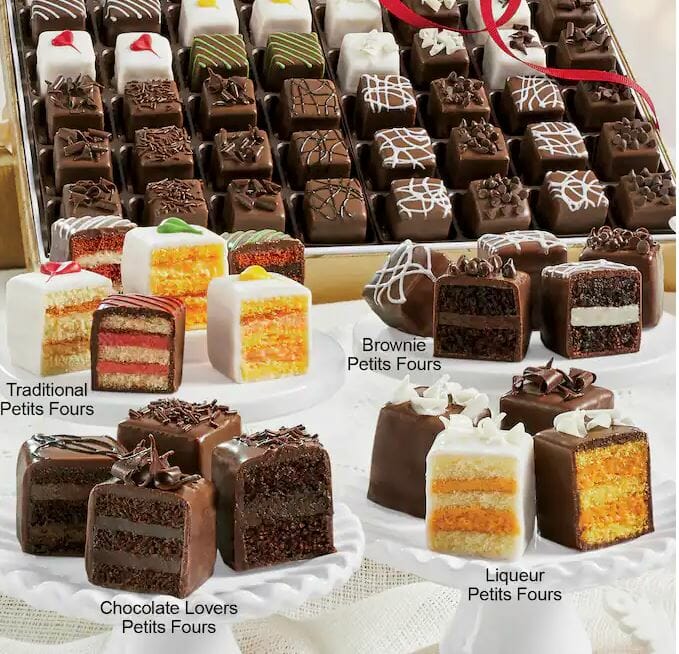
It’s a process that is not duplicated anywhere else…and when a gift recipient opens the festive gift box arriving from The Swiss Colony, it is a truly special experience—to be surpassed only by biting into one of these exquisite tiny layered desserts.
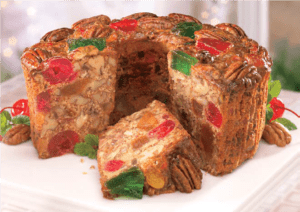
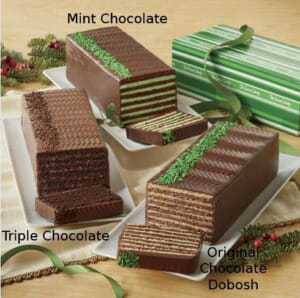
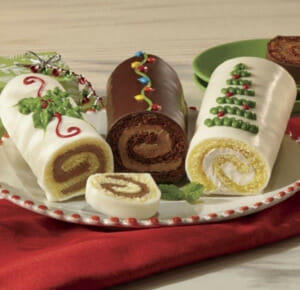
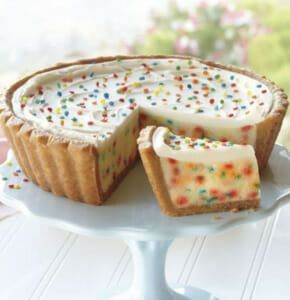
Comments (15)
Mia
I have been in love with these petit fours since the first time i ever ate them in the early 80’s… they are so divine you just can’t stop eating them 😍😍😍😍
The Swiss Colony
Mia! We agree! Sometimes we have to hide them away to stop from eating any more 😊
Jeannie Degeorge
I placed an order two weeks ago to be delivered on the 21st. of August, today is the 21st. Of August and my order was not delivered, it was a birthday gift and I’m very disappointed, and so is the recipient, how do I tell a loved one that they won’t be getting there favorite gift this year!!!
Penny
My favorite birthday treat since a child, has always Been ,Petit fours 😁
Not easy to find delicately baked ones !
Also looking for a cake like Petit Four that is 4 oblong squares of cake , iced over like the petit fours ! I cannot remember the name and only had them in London ?
Kim Walters
Are there any corn products, such as confectioners sugar, corn syrup, regular baking powder, used in your bakery products? My granddaughter is deathly allergic to anything corn. Thanks
Denyse
I order these on a yearly basis- my daughter loves them.
She wants to bring them to school to share with classmates but we were told that we cannot send any products with nuts or nut derivatives. They are supposed to be nut free .
Do these make that requirement? I could not find a list of ingredients on anything. I guess that would be a suggestion… please make those available so that people with allergies know if it is safe to purchase.
Thank you
Kathy Bruch
What is the shelf life of petit fours? If I order in November, will they still be fresh at Christmas?
Carolyn R.
I absolutely love these little cakes! I have just learned I’m a diabetic so, this year I ordered the no sugar petit fours. Can’t wait to try them!
Do you ship these all year round?
severson
No, we don’t ship any petits fours year-round because they can’t take the heat in summer months.
QUETCY GONZALEZ
Do they need to be Refrigerated ?
severson
Yes, they should be refrigerated once you receive them.
Richard Wallace
What is the sweetner in the no sugar Petit Fours?
severson
It depends on the specific assortment that you are looking at, but our most common non-sugar sweetener is maltitol. Thanks for writing!
Wilma Klag
I need a catalog mailed to me. Thanks, Wilma Klag 20 Doe Drive Elkton MD. 21921
severson
It’s easy to get a catalog. Just visit this page: https://www.swisscolony.com/catalog/request_catalog.jsp …and thanks for writing!